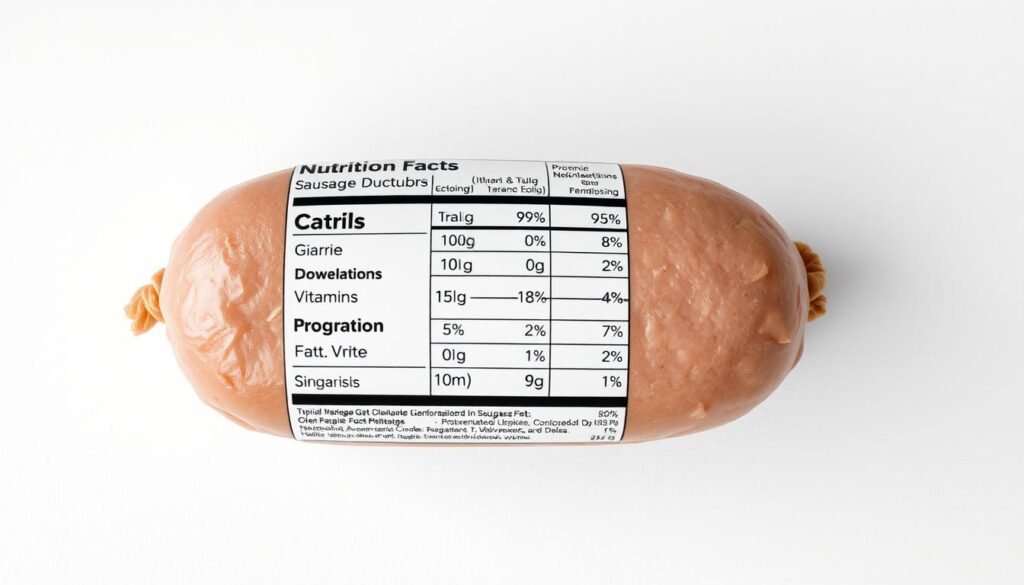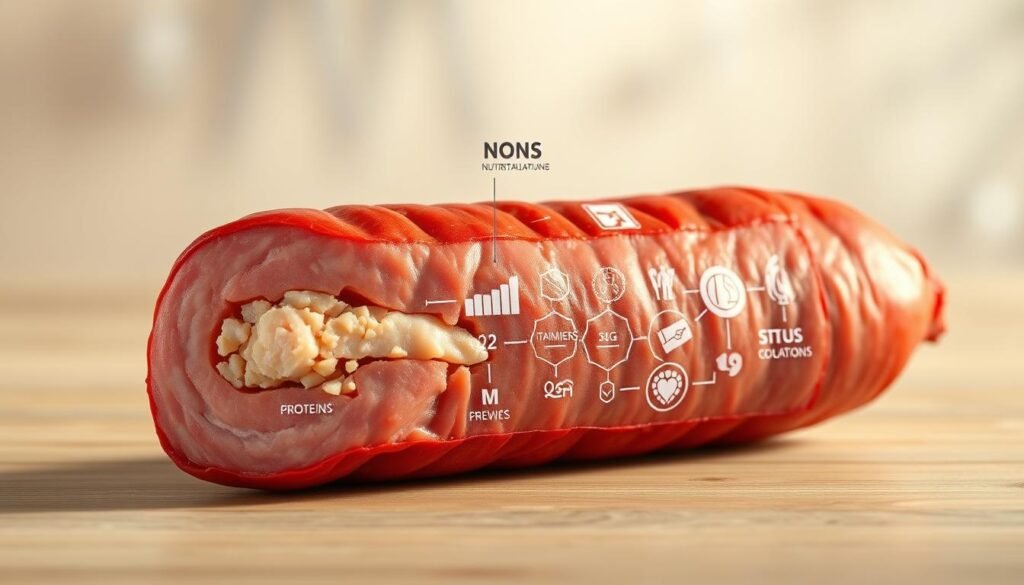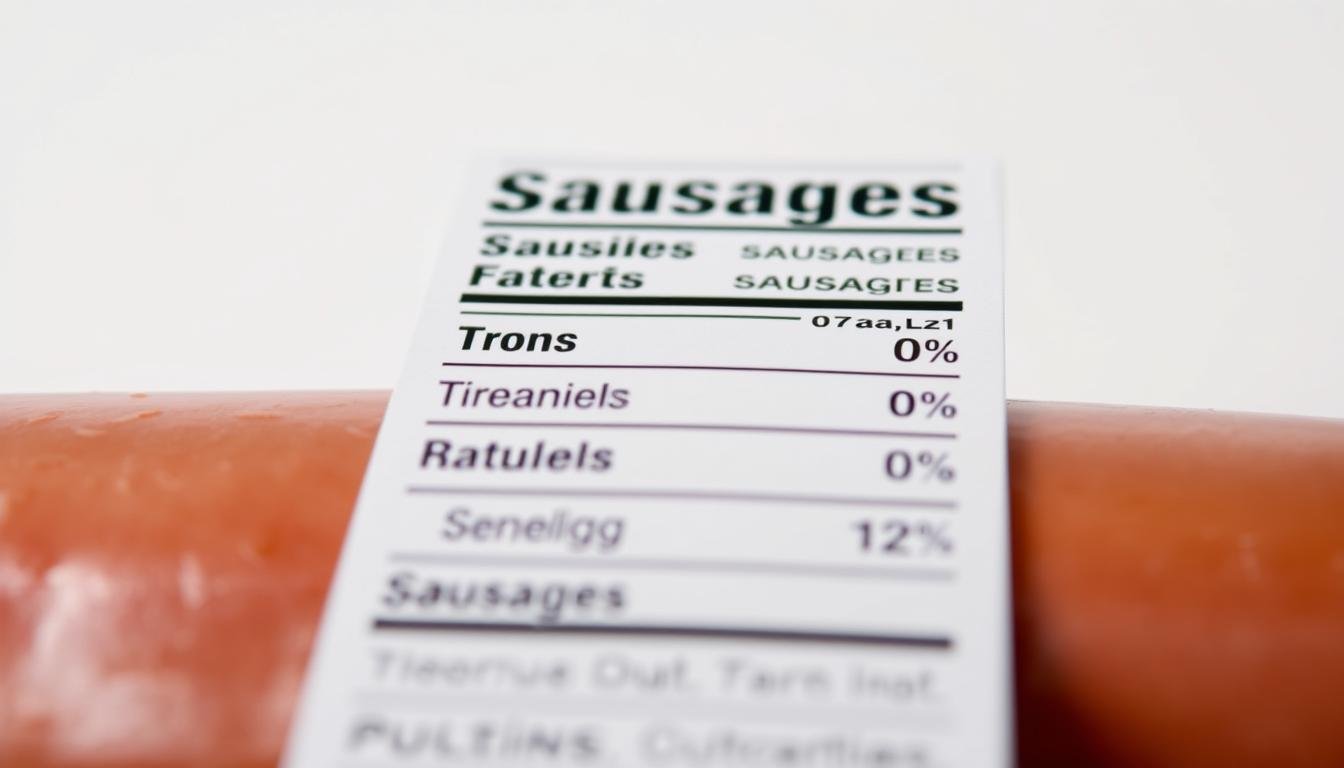Could your favorite breakfast staple secretly be a surprising source of essential nutrients? While sausages often face criticism for their fat or sodium content, their role in providing key vitamins and minerals like iron is rarely discussed. Let’s unpack the truth behind this protein-packed food and its place in a balanced diet.
According to HFG nutritionist Claire Turnbull, iron plays a critical role in early development, particularly for toddlers. Many meats, including certain sausage varieties, contribute to daily iron intake. For example, a 2.0 oz serving of smoked turkey sausage provides 5.38 mg of iron—nearly 30% of an adult’s recommended daily value. Data from the USDA confirms that pork and chicken options also deliver meaningful amounts.
However, not all products are created equal. Processing methods and added ingredients significantly impact nutritional value. This article explores how different types stack up in terms of iron, vitamins, and other health factors. We’ll also compare them to alternative low-carb protein sources like beef and shrimp.
Key Takeaways
- Certain sausage varieties provide up to 30% of daily iron needs per serving
- Processing methods affect both nutritional benefits and potential drawbacks
- Turkey and chicken options often contain more iron than traditional pork versions
- Balance portion sizes with other iron-rich foods for optimal health
- Always check labels for sodium content and additives
From braunschweiger to frankfurters, we’ll break down what’s really in your meat selection. You’ll discover how to maximize nutritional benefits while minimizing less desirable components—no guesswork required.
Introduction: Understanding Sausage Nutrition
While often praised for their rich flavors, sausages pack more nutritional value than many realize. These protein-rich products deliver essential nutrients that support muscle health and energy production. But smart choices matter—leaner options balance macronutrients while keeping less desirable components in check.

Building Blocks: Protein and Micronutrients
A typical serving provides 10-15 grams of protein, making these products valuable for maintaining muscle mass. Vitamin B12 shines here too—a single link can supply 20% of your daily needs. This nutrient supports nerve function and red blood cell formation.
Watch total fat and sodium levels to maximize benefits. The USDA suggests:
- Limit saturated fat to under 10% of daily calories
- Keep sodium below 2,300 mg per day
- Choose options with at least 10g protein per serving
When comparing options like Italian sausage vs. bratwurst, lean poultry versions often outperform pork in protein-to-fat ratios. For those on specialized diets, pairing sausages with veggies creates meals that align with low-carb diets while boosting iron absorption through vitamin C-rich sides.
Moderation remains key. Enjoying these products as part of a balanced diet—think 2-3 times weekly—helps maintain nutrient diversity without overdoing sodium or saturated fats. Later sections will explore how different varieties stack up nutritionally.
Nutritional Breakdown of Sausages: Beyond Iron
While their savory taste grabs attention, processed meats bring more to the table nutritionally than many expect. Beyond iron content, these protein sources deliver essential vitamins and minerals that support energy production and immune health. Let’s explore what’s really packed into that casing.

Key Vitamins and Minerals Overview
Italian varieties shine with vitamin B12—a single link offers 25% of your daily needs, crucial for nerve function. Breakfast links often pack niacin (15% DV), supporting skin health and digestion. Pork versions provide zinc for immune support, while turkey options deliver selenium, a powerful antioxidant.
USDA data reveals:
- Chicken sausage: 10% daily zinc per 3-ounce serving
- Beef smoked links: 8% daily phosphorus for bone strength
- Plant-based alternatives: Fortified with B vitamins but lower in minerals
Managing Saturated Fat and Sodium Levels
Watch portion weights carefully. A 2-ounce pork link contains 35% of daily saturated fat limits, versus 20% in chicken versions. Sodium levels vary wildly—some smoked products hit 30% DV per serving.
Smart swaps make a difference:
- Choose uncured options with 25% less sodium
- Grill instead of pan-frying to reduce fat content
- Pair with vitamin C-rich peppers to boost nutrient absorption
Balance is key. Enjoying these products occasionally while focusing on whole-food sources of nutrients creates sustainable eating habits.
Do Sausages Have Iron? Uncovering the Iron Content
Meat lovers might be surprised to learn how significantly iron levels vary across different sausage varieties. Nutritionists emphasize that choosing the right type can meaningfully impact daily nutrient intake while managing potential health concerns.

Iron Levels in Various Sausage Types
Not all protein-packed links deliver equal iron benefits. According to the Hot Dog and Sausage Nutrition Guide, here’s how popular options compare per 3-ounce serving:
| Type | Iron (mg) | % Daily Value | B12 (% DV) |
|---|---|---|---|
| Beef Smoked | 2.1 | 12% | 35% |
| Chicken Apple | 1.8 | 10% | 28% |
| Turkey Pepper | 2.4 | 13% | 22% |
| Plant-Based | 3.2* | 18% | 15% |
*Fortified with iron sulfate
Why Iron is Essential for Health
This mineral powers oxygen transport through red blood cells. Claire Turnbull from HFG notes: “Low iron levels in children can impair cognitive development, while adults may experience fatigue and weakened immunity.”
Vitamin B12 enhances iron absorption—a key reason beef varieties often show better bioavailability. However, processed meats sometimes contain high sodium, so balance remains crucial. Look for uncured chicken or turkey options with 20% less salt than traditional recipes.
Pairing these proteins with citrus fruits or bell peppers maximizes nutrient uptake. For those monitoring preservatives, several brands now offer nitrate-free versions without sacrificing iron content.
Comparing Sausage Varieties: Beef, Chicken, and More
From backyard BBQs to breakfast tables, sausage choices shape more than just flavor—they impact your nutrient intake. Let’s explore how different meats and preparation styles affect what lands on your plate.
Nutritional Contrast: Hot Dogs, Dinner Sausages, and Breakfast Options
Meat selection drives nutritional outcomes. Beef varieties often lead in iron but pack more saturated fat. Chicken and turkey options provide leaner protein, while lamb brings unique flavor with higher calorie counts.
Consider these USDA comparisons per 2-ounce serving:
| Type | Calories | Protein (g) | Sodium (mg) | Saturated Fat (g) |
|---|---|---|---|---|
| Beef Hot Dog | 180 | 6 | 550 | 5.2 |
| Chicken Dinner | 140 | 12 | 420 | 3.1 |
| Pork Breakfast | 160 | 8 | 380 | 4.8 |
| Lamb Merguez | 200 | 9 | 490 | 6.0 |
Processed meats like hot dogs show 18% higher cancer risk in long-term studies compared to fresh cuts. Breakfast links often surprise with lower sodium—some turkey versions contain 30% less than smoked dinner varieties.
For carb-conscious diets, chicken apple sausage pairs well with veggie scrambles. Grill lamb merguez with roasted peppers to balance richness. Remember: occasional enjoyment fits most eating plans when combined with whole grains and leafy greens.
Incorporating Sausages into a Balanced Diet
Enjoying savory flavors while maintaining nutritional balance is easier than you think. Smart preparation methods and strategic meal planning let you savor these protein-rich foods without overdoing less desirable components. Let’s explore practical ways to make every bite count.
Healthy Preparation and Cooking Tips
Transform your cooking routine with these simple upgrades:
- Bake or grill instead of frying to reduce fat by 30-40%
- Prick casings before cooking to drain excess grease
- Blend ground poultry with mushrooms for lower sodium meals
Boost flavor without extra salt by rubbing links with smoked paprika or rosemary. Remove skin from chicken varieties to cut saturated fat by half. Always use a meat thermometer—160°F ensures safety while preserving juiciness.
Portion Control and Meal Planning Strategies
Keep servings to 2-3 ounces (about 1 link) per meal. Pair with:
- Roasted Brussels sprouts for fiber
- Quinoa instead of white rice
- Poached eggs for morning protein variety
Create weekly menus using this guide: include sausage-based dishes 2-3 times max. Balance other days with plant proteins like lentils. Store cooked portions in 4-ounce containers for quick lunches.
For family meals, slice links into stir-fries or grain bowls. This stretches the amount while increasing veggie intake. Always check labels—choose options with under 400mg sodium per serving.
Conclusion
Balancing flavor and nutrition doesn’t require ditching favorite foods—it’s about smart pairing. Many meat products deliver essential minerals like zinc, supporting immune health, while certain varieties offer calcium for bone strength. Pairing these proteins with colorful vegetables creates meals rich in vitamin C, which boosts nutrient absorption.
Portion control remains vital. Enjoying 2-3 oz servings 2-3 times weekly provides iron and B vitamins without exceeding sodium limits. Always check labels for additives, and opt for grilled or baked preparations to reduce fat content.
Remember: no single food defines a diet. Combine occasional indulgences with whole grains, leafy greens, and legumes. This approach ensures your body gets diverse nutrients while satisfying cravings. Whether choosing turkey links or plant-based alternatives, informed decisions let you savor flavor and nourishment in every bite.




